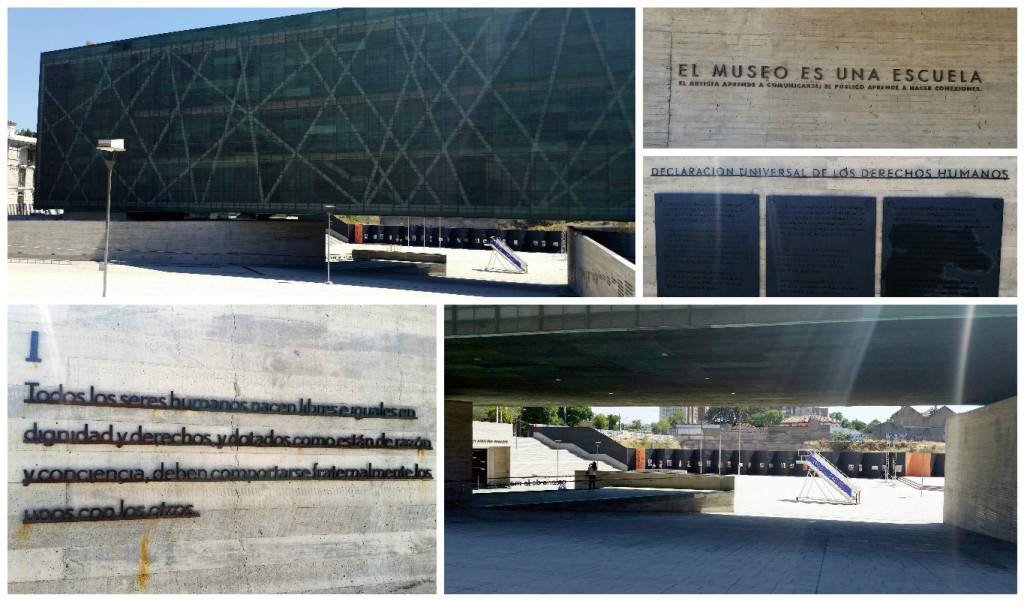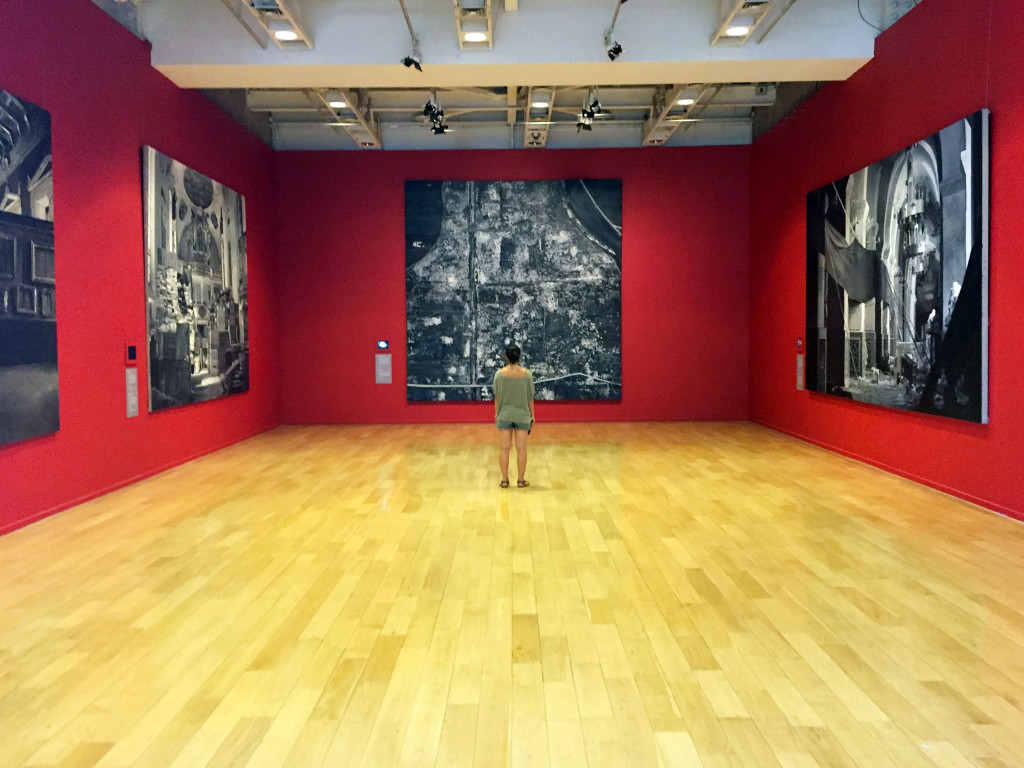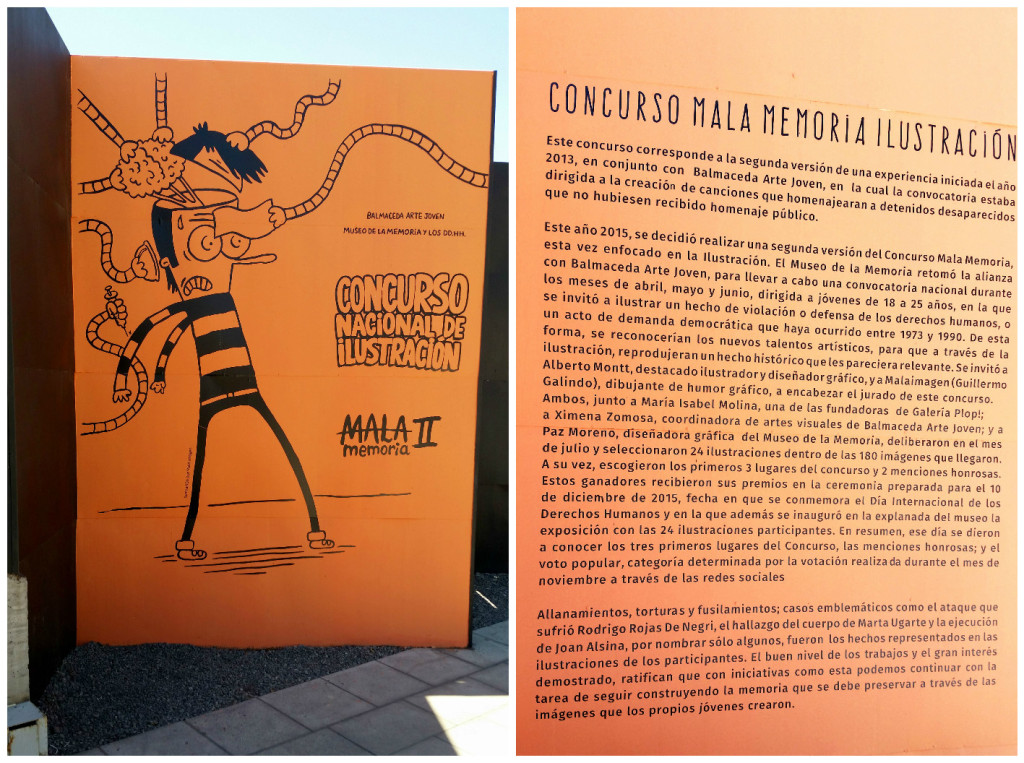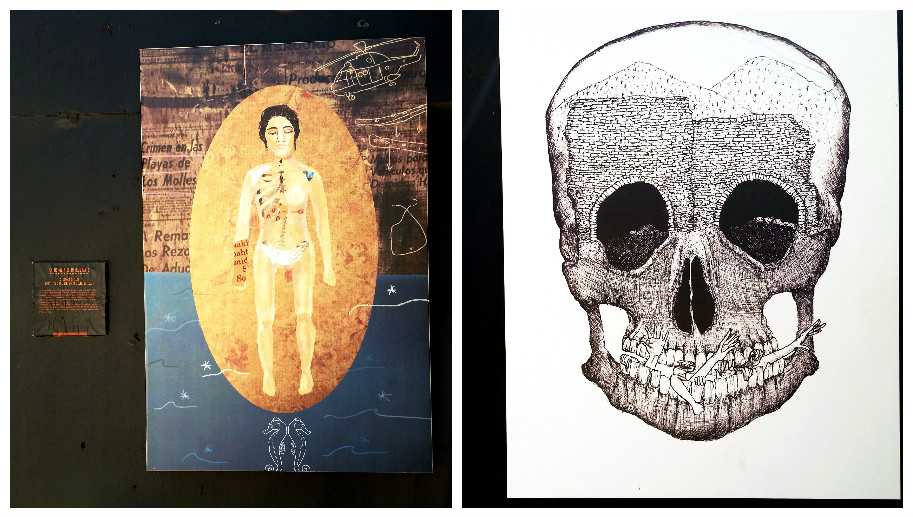We walked to the Museum of Memory and Human Rights on Sunday to learn about Chile’s history. The museum remembers and gives visibility to the human rights violations of Pinochet’s military dictatorship during the 70’s-80’s.
We took advantage of the audio tours available in English ($2000 CLP). You get a remote-like object that works sorta like a cell phone, and you can follow along a narrated history starting with the coup in 1973 to the return to democracy in 1990.
I’m a bit embarrassed to admit I had little prior knowledge of the details of Chile’s history outside the fact that there was a dictatorship under Pinochet sometime back. I am glad that this was one of our first stops while in Santiago, since I think it helps me understand, not only recent history and the nation’s pain, but how the character of the culture has been shaped. Such a restrictive regime may explain the abundance of street art that colors Santiago.


The museum does a great job of storytelling, using video, audio, and artifacts of all sorts. It’s got a clean modern look, with 4 floors. We took our time and it took us a good 4 hours or so to listen to most of the audio tour and look through the exhibits.

The top floor has special exhibits, with “Expolio” currently on display. It explores the destruction or disappearance of art using enormous paintings and stop motion films alongside them. It seems a slightly un-thought-of, yet natural to look at how art’s absence affects the memory of a nation or culture, along with the idea of these artifacts being a natural right society maintains.
The plaza hosted an outdoor exhibit with illustrations by artists ages 18-25 representing people or events from the Pinochet regime. They were accompanied with explanations of what they represented, and did a great job summarizing the museum, making history appealing and easier-to-digest.






Thank you for the share. I was ignorant and knew only of the Kmer Rouge’s brutal discard for human life in Cambodia in the 70s.
I didn’t know anything about Chile’s history to be perfectly honest, so this was a good micro-lesson for me. Its always amazing to me how people can create and make beautiful things during such dark times, especially when the work is so symbolic and deep. I got to say, the “nose man” pen and ink is pretty fabulous!